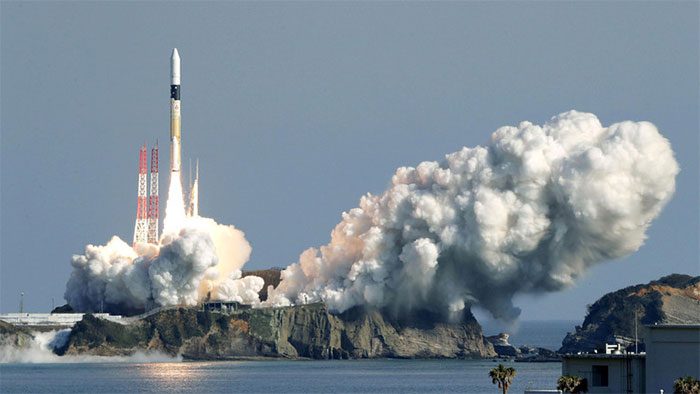On September 7, Japan successfully launched a rocket carrying the Smart Lander for Investigating Moon (SLIM) and the X-ray Imaging and Spectroscopy Mission (XRISM) satellite into space.
The launch took place at 8:42 AM (local time) on September 7 at the Tanegashima Space Center in southern Japan, with approximately 35,000 people watching online.

The H2-A rocket carrying the Smart Lander for Investigating Moon (SLIM) was launched from the Tanegashima Space Center, southern Japan, on September 7, 2023. Photo: Kyodo/TTXVN
According to the plan, SLIM – developed by the Japan Aerospace Exploration Agency (JAXA) – will enter lunar orbit approximately 3 to 4 months after launch and is expected to land on the lunar surface after 4 to 6 months.
SLIM is designed to land within 100 meters of a specific target location on the Moon, significantly less than the usual range of several kilometers. In a statement before the launch, JAXA stated: “With the development of the SLIM lander, humanity will achieve a qualitative change, moving towards landing where we want, not just where it is easy to land. By achieving this, we can land on planets that are even scarcer in resources than the Moon.” JAXA emphasized that “there has been no case before of landing precisely at predetermined locations on celestial bodies with significant gravity like the Moon.”
Meanwhile, XRISM – developed in collaboration with JAXA, the National Aeronautics and Space Administration (NASA), and the European Space Agency (ESA) – is designed to study the mass of matter and energy in the universe, as well as the composition and evolution of celestial bodies.
If successful, the data collected by Japan from the Moon will be used for the Artemis program led by the United States, which aims to return humans to the Moon by 2025 and promote lunar exploration activities. The ultimate goal is to explore Mars.


















































